Forget about your cares
It is time to relax
At the Junction…
My most frequent babysitter as a kid was the television set. Now, I realize I’m a little strange, but I don’t think that’s unusual for baby boomers. I probably saw most episodes of the more popular cartoons, Westerns, and sitcoms made during the 1960s. Back then, though, I didn’t know which shows were good and which were bad. I just watched what the networks fed me. I hadn’t yet developed any critical thinking skills.
Today, thanks to various cable TV stations that specialize in nostalgia, I get to indulge in many of these shows again. And I sometimes wonder “Why did I ever watch this dopey thing?”
One of them is the half-hour CBS show, Petticoat Junction. This is a situation comedy with a rural theme that aired between 1963 and 1970. Petticoat Junction had two sister shows, “The Beverly Hillbillies” and “Green Acres.” These two shows were funny. Petticoat Junction was… well… “charming.” But there were few truly wacko characters, so the show relied more on light situations, and the laughs were sparse.
So why am I praising it? Maybe because I’m now popping Centrum® senior multivitamins, but I don’t require laughs like I once did. Just smiles. These days, old-fashioned settings and cornball humor, which Petticoat Junction had in spades, are (pardon the colloquialism)… fine and dandy.
Granny and Jethro Clampett are TV classics, and I love the crazed bumpkins in “Green Acres,” who lived in a strange, alternative universe. But Petticoat Junction, for me, is less frenzied.
Heavens to Betsy, I don’t want frenzy these days! What do I want? I’ll tell you: I want to recline in a rocking chair on the front porch of the Shady Rest Hotel, ogle the beautiful Bradley sisters, then mosey inside with Uncle Joe to sample Kate Bradley’s fried chicken, mashed potatoes, and gravy.
Petticoat Junction (henceforth “PJ”) was one of three situation comedies (including the earlier “The Beverly Hillbillies” and the later “Green Acres”) created by a man named Paul Henning. Henning was a prolific writer of radio, television, and film. In 1962, he concocted an idea for a television show about a bunch of hillbillies who strike it rich, then move to swanky Beverly Hills, California. “The Beverly Hillbillies” was so successful, Henning was asked to invent another show. This would be PJ.
Henning came up with the show’s premise from stories his wife told of being a child in Eldon, Missouri, where her grandparents ran a hotel near some railroad tracks. She entertained Henning with anecdotes about the simple local folk, and the city slickers who checked into the hotel. Henning liked the contrast, which was sort of a reversal of “The Beverly Hillbillies.”
He called his fictional hotel the “Shady Rest,” situating it midway between the farm towns of Hooterville and Pixley. A three-car passenger train named the “Hooterville Cannonball” connected the two boroughs, but apparently went nowhere else (if you like trains, the “Cannonball” might be worthy of research). The town of Hooterville had a small grocery store run by a man named Sam Drucker (Frank Cady). Nearby lived various farmers, such as Fred, Doris, and Arnold Ziffle (the last-named a near-genius pig), Newt Kiley, catty Selma Plout, deaf Grandpappy Miller, ex-New Yorkers Oliver Wendell and Lisa Douglas, and others. But most of the action occurred in and around the Shady Rest Hotel.
Here, a widow named Kate Bradley (Bea Benaderet) managed the Shady Rest, along with her three luscious daughters: Billie Jo, Bobbie Jo, and Betty Jo. They were assisted… or unassisted… by Kate’s uncle, Joe Carson (Edgar Buchanan). There was also a frisky terrier with no name who was always upstaging Uncle Joe whenever Joe tried to concoct some new, failed business enterprise.
Additional characters included Cannonball engineers Charlie Pratt (Smiley Burnette), conductor Floyd Smoot (Rufe Davis), and bad guy Homer Bedloe (prolific character actor Charles Lane), who was forever trying to shut down the Cannonball. Later seasons featured cropduster Steve Elliott (Mike Minor), who eventually married Betty Jo, both in the show and in real life; engineer Wendell Gibbs (Byron Foulger); game warden Orrin Pike (Jonathan Daly); and Dr. Janet Craig (June Lockhart of “Lassie” and “Lost in Space”).
PJ ran for seven seasons. The cast frequently changed, which helped keep the show fresh. Three different actresses played blonde Billie Jo: Jeannine Riley, then Gunilla Hutton, then Meredith MacRae. Two actresses played brunette Bobbie Jo: Pat Woodell, then Lori Saunders. Redheaded Betty Jo was played throughout by Linda Kaye Henning, daughter of Paul (billed as “Linda Kaye” early on).
Edgar Buchanan, as Uncle Joe, was the only other principal actor besides Henning and Frank Cady to last the entire run. He was the closest thing to a wacko and provided many of the best laughs. He just wasn’t as good-looking as his nieces.
Along with its instantly recognizable theme song, music played a big part in PJ, both inside and outside the show. Actress Pat Woodell was a professional singer, and Meredith MacRae was the daughter of singer/actors Sheila (“The Honeymooners”) and Gordon MacRae (OKLAHOMA). During the 1963-64 season, the three Bradley girls and a friend (played by Sheila James from “Dobie Gillis”) formed a mop-top pop group called The Ladybugs, in response to the Beatles’ recent success (the actresses recorded a single as The Ladybugs and, like the Beatles, appeared on “The Ed Sullivan Show”). In 1968-69, MacRae, Saunders, and Henning released two singles as The Girls from Petticoat Junction. And many episodes, particularly the later ones, featured group singalongs around the piano.
_________
Of the seven seasons that PJ aired, my favorites are seasons four and five. These featured Meredith MacRae, who played Billie Jo the longest. Also, the fictional sisters’ personas had solidified: Billie Jo was ambitious and career-minded; Bobbie Jo was a cute airhead; and Betty Jo was the tomboy turned wife and mother.
Also, seasons four and five still featured Bea Benaderet as the mom, Kate Bradley. Benaderet was the most skilled actor in PJ. She’d had a long career in radio and television (she provided the voice for Betty Rubble in “The Flintstones”). She was so talented, that Paul Henning is on record saying that PJ existed only because he wanted to get Benaderet in a starring role.
Sadly, Benaderet contracted lung cancer, and she missed much of season five. She died in 1968. Her place was taken by June Lockhart, who portrayed a doctor who takes up residence at the Shady Rest. Lockhart tried, but she couldn’t replace Benaderet. The show’s ratings declined.
PJ was canceled in 1970 at the beginning of an infamous “rural purge” by CBS. A lot had happened in America in the late 1960s, and CBS executives felt that comedies with rural themes were out of touch. Pat Buttram, who played Mr. Haney on “Green Acres,” famously said “(they) canceled everything with a tree.” Shows like PJ, “Green Acres,” and “Mayberry R.F.D.” were replaced by more urbane and topical sitcoms like “All in the Family,” “M.A.S.H.,” and “The Mary Tyler Moore Show.”
Those shows, and others from the 1970s, are comedic wonders, loaded with clever writing, characters, and trend-setting humor. But it’s a heterogenous world, and I feel there’s also a place for simpler, throwback shows like PJ. I’m grateful to MeTV for resurrecting this special show, which for some reason has been neglected by the suits at other cable stations.
If you like homespun simplicity, check out PJ, if not on MeTV, then on DVD. It won’t have you howling with laughter. But it has a simple grace that is especially welcomed in these graceless times.

Bradley sisters, third lineup. L to R: Linda Kaye Henning, Lori Saunders, Meredith MacRae (copyright Gene Howard)
Some interesting facts about PJ:
- There were actually four Billie Jo’s. The original actress selected was Sharon Tate. She’s pictured in several early promo photos, but she resigned before taping because her agent felt she wasn’t ready for a major television role (some say it was because she had posed nude). She later popped up as a recurring guest character on “The Beverly Hillbillies.”
- Pat Woodell, the original Bobbie Jo, left the show to become a singer. That didn’t work out well, and she returned to acting, appearing in several sexploitation flicks, including THE BIG DOLL HOUSE from 1971. She passed away in 2015.
- The bright little terrier named “Dog” had the real name of “Higgins” and later was the star of the popular movie BENJIE, which also featured Edgar Buchanan.
- Jeannine Riley and Gunilla Hutton, who both played Billie Jo, later jumped into the hay lofts of the variety show “Hee Haw” (another victim of CBS’s rural purge).
- Before her one season in PJ, Gunilla Hutton was a chorus girl who toured with Nat King Cole. Cole became infatuated with Hutton, who was 19 years younger, and almost left his wife. He abandoned the fling after developing smoking-related lung cancer.
- Mike Minor, who played handsome pilot Steve Elliott, was the son of Don Fedderson, creator of “My Three Sons.” He and Linda Kaye Henning were married five years, then divorced. Minor died in 2016.
- Before PJ, Meredith MacRae played the girlfriend of the eldest Douglas boy in “My Three Sons.” (Shucks, why couldn’t the Bradley girls and Douglas boys ever hook up??). MacRae succumbed to brain cancer in 2000.
- Lori Saunders’ real name is “Linda,” but she changed it to avoid confusion with Linda Kaye Henning. Saunders and Jeannine Riley later acted together in a failed sitcom called “Dusty’s Trail,” a clone of “Gilligan’s Isle” set in the West, starring Bob Denver and Forrest Tucker.
- Smiley Burnette, who played engineer Charley Pratt, was a former Western radio and television star, a sidekick to both Gene Autry and Roy Rogers. He was also a musical prodigy, and wrote many songs with Autry.
- Frank Cady is the only actor to ever appear in three concurrent television shows (PJ, “Green Acres,” and “The Beverly Hillbillies”). He was in his 40s-50s when he played Sam Drucker. Cady lived to age 96, passing away in 2012.
(Wikipedia provided much of the information for this article. If you want to read an exhaustive analysis of the fictional town of Hooterville, click here. Someone devoted a lot of time to this subject. This person sounds even stranger than me.)



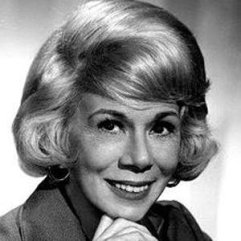



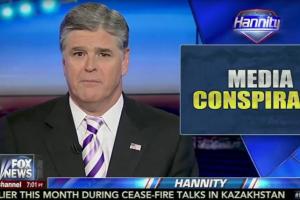

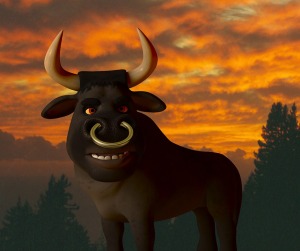










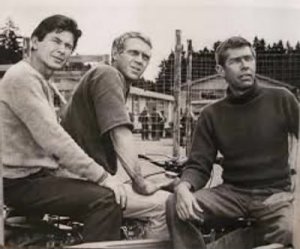
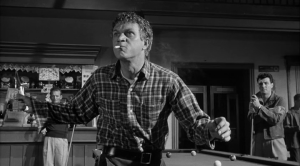






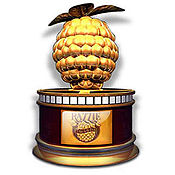


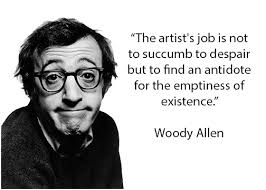




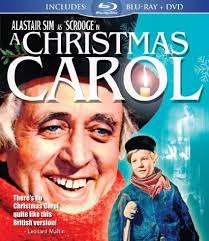

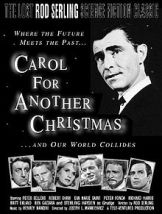













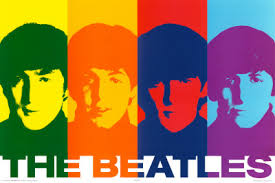












You must be logged in to post a comment.